Table of contents
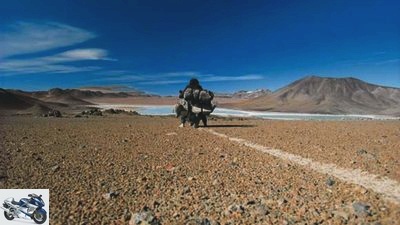
Michael Martin
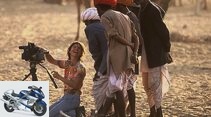
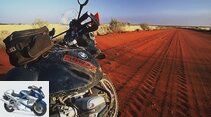
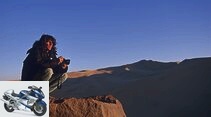
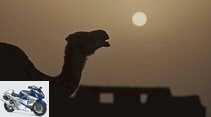
53 pictures
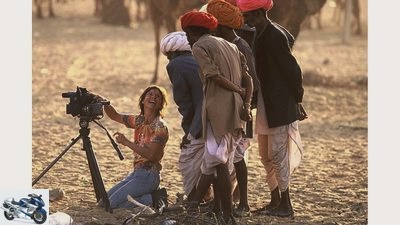
Martin
1/53
Of course, that makes Indian men curious.

Martin
2/53
… on the most beautiful slopes in the world.
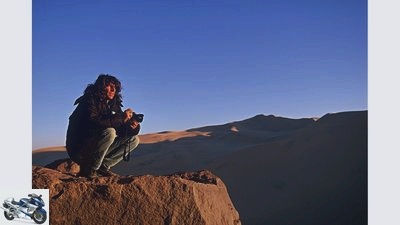
Martin
3/53
The virtue of a photographer: waiting for the right light.
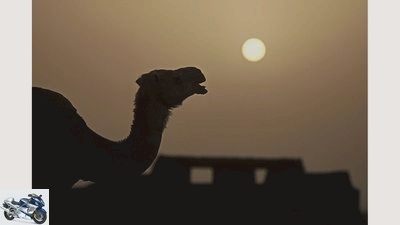
Martin
4/53
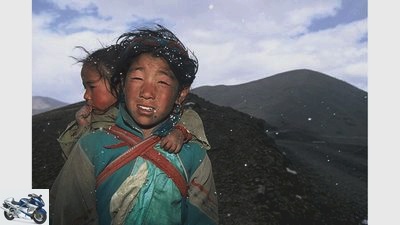
Martin
5/53
A Tibetan boy carries his sister over a passport.
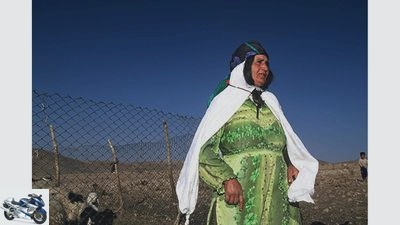
Martin
6/53
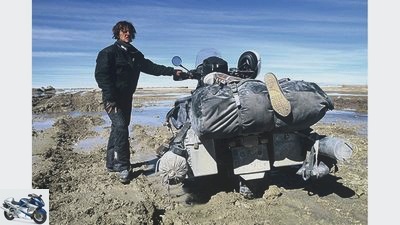
Martin
7/53
A world tour for two and two professional camera equipment:
Actually, a motorcycle is unsuitable for such a project.
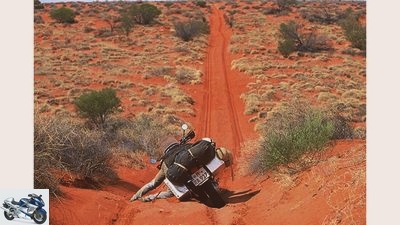
Martin
8/53
… which are also often the heaviest.
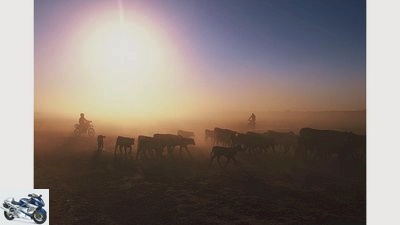
Martin
9/53
For example: …
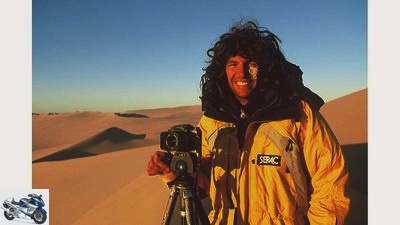
Martin
10/53
The photographer Michael Martin specializes in deserts.

Martin
11/53
The bitter cold at an altitude of over 5000 meters is also troubling Wallner and Martin.
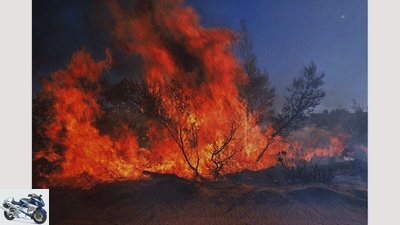
Martin
12/53
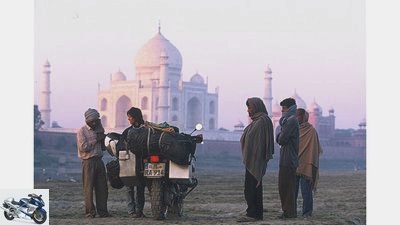
Martin
13/53
In return, it is easier to get into conversation with people in distant countries.
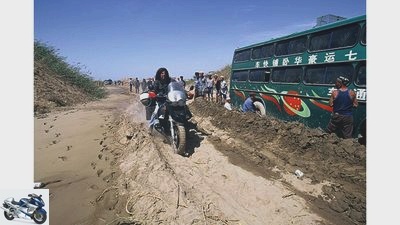
Martin
14/53
Fortunately, the others get stuck sometimes too.
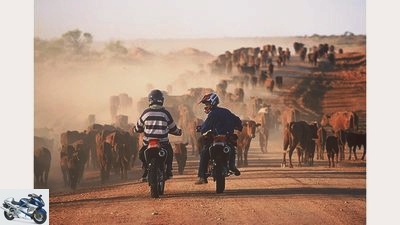
Martin
15/53
… Enduro cowboys at work in the Australian outback.
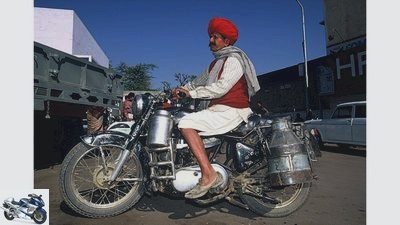
Martin
16/53
Milk driver with traditional head protection.
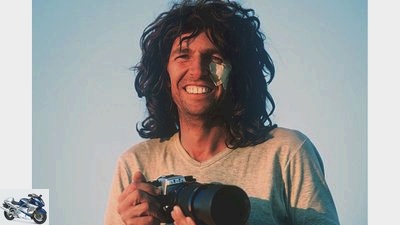
Martin
17/53
More from Michael Martin and his tour …
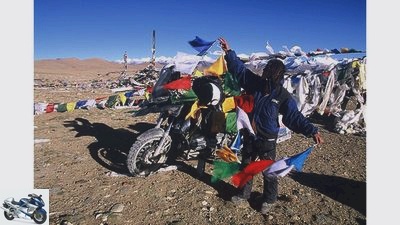
Martin
18/53
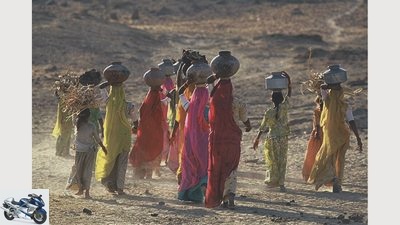
Martin
19/53

Martin
20/53
And somehow it goes on and on …
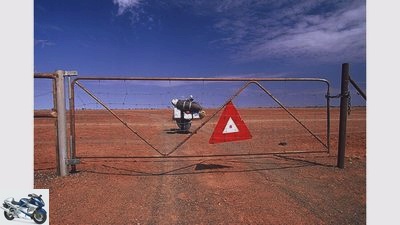
Martin
21/53
Fortunately, street signs are international.
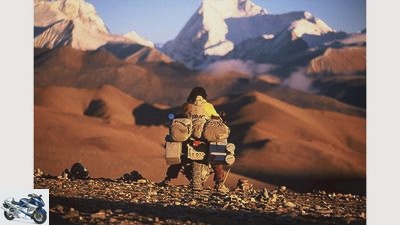
Martin
22/53
Contrasting Tibet: dust-dry deserts and a view of majestic ice giants.

Martin
23/53
Current advertising for a current motorcycle.
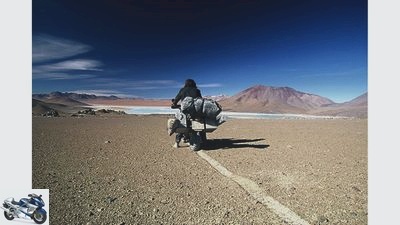
Martin
24/53
… through the deserts of the earth you can read in MOTORRAD 24/2004 and 1/2005.

Martin
25/53
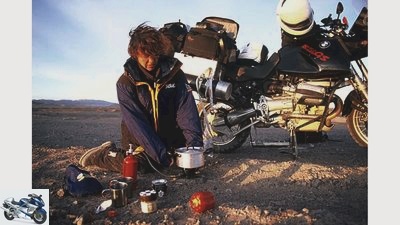
Martin
26/53
For five years a BMW R 1150 GS was his home and …
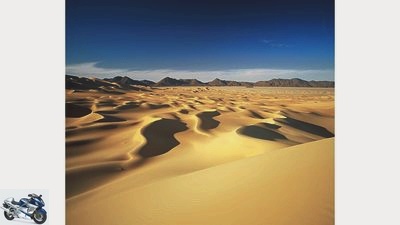
Martin
27/53
The big goal: Fascinating things from the world of deserts.
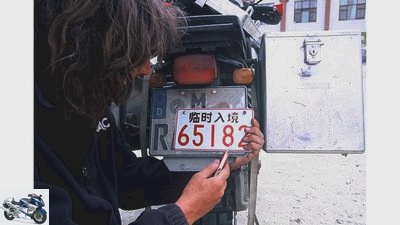
Martin
28/53
The bureaucracy challenge: own approval for China.
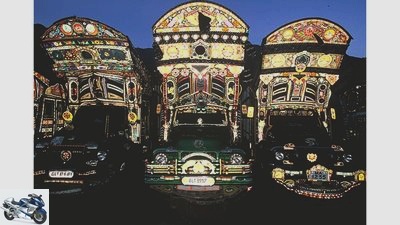
Martin
29/53
Decorated pack donkeys on the subcontinent.
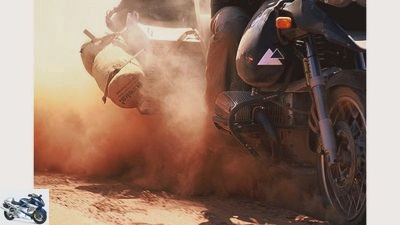
Martin
30/53
The overloading of the GS often takes its toll.
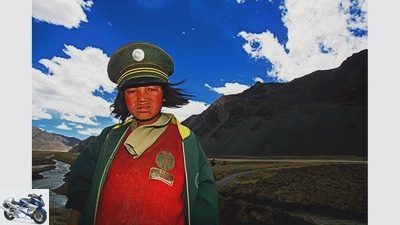
Martin
31/53

Martin
32/53
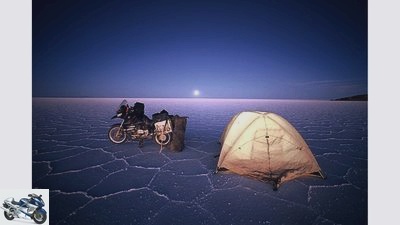
Martin
33/53
… a small tent to travel all the deserts of the world by motorcycle.
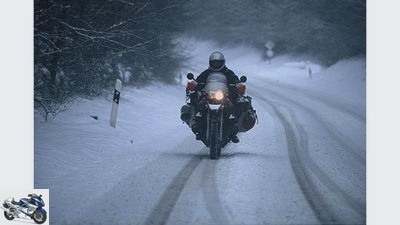
Martin
34/53
Before that, however, it is necessary to cope with the new beginnings in Germany.
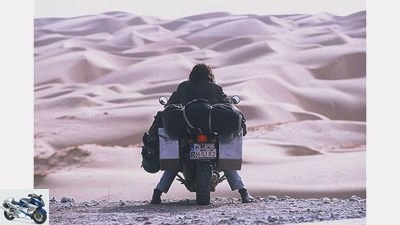
Martin
35/53
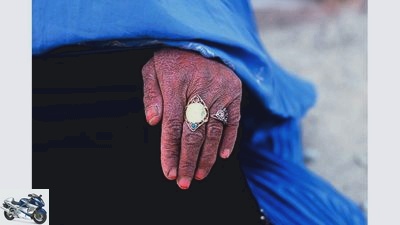
Martin
36/53

Martin
37/53
The bottle-green Shyok is the only splash of color in the barren mountainous landscape of Ladakh.
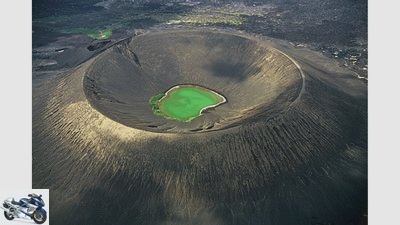
Martin
38/53
Part 2 and 3 of “Deserts of the earth” in MOTORRAD 24/2004 and 1/2005.

Martin
39/53
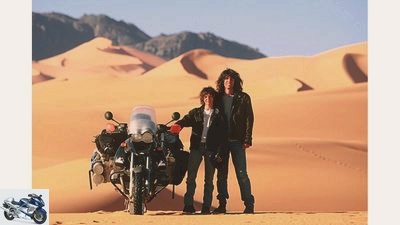
Martin
40/53
Also there: his partner Elke Wallner, who …
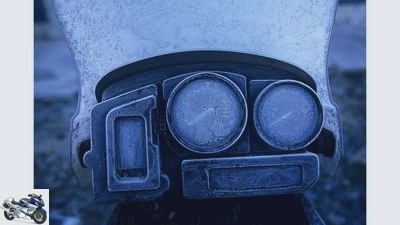
Martin
41/53
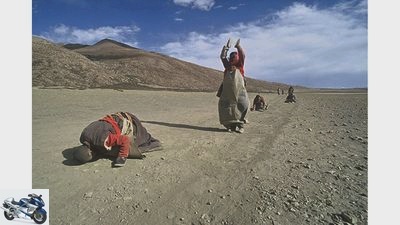
Martin
42/53
Tibetan pilgrims circle the holy Mount Kailash,
by measuring the way with your body.
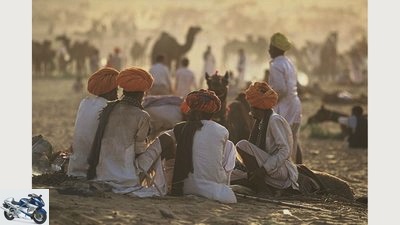
Martin
43/53
The camel market in the Indian oasis of Pushkar is considered to be the largest in the world.
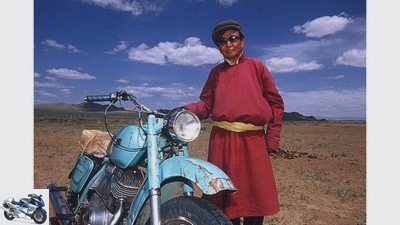
Martin
44/53
A rare encounter in the Gobi desert.
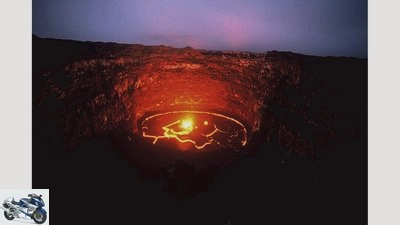
Martin
45/53
Part 2 and 3 of “Deserts of the earth” in MOTORRAD 24/2004 and 1/2005.
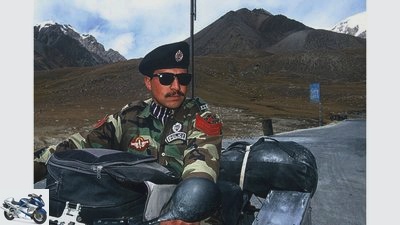
Martin
46/53
Part 2 and 3 of “Deserts of the earth” in MOTORRAD 24/2004 and 1/2005.
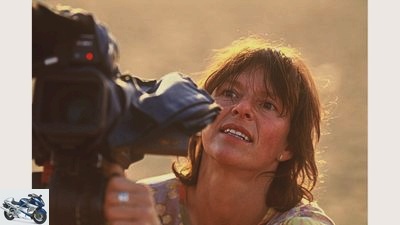
Martin
47/53
… documented the trip with the film camera.
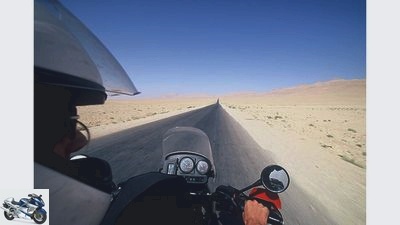
Martin
48/53
But then: endless expanses …
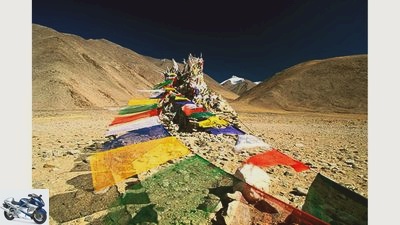
Martin
49/53
Prayer flags on a 5000 meter high pass in Ladakh.
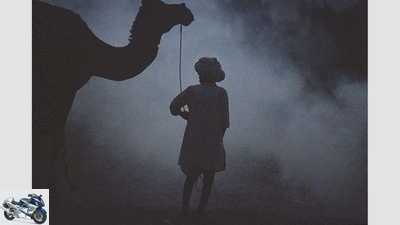
Martin
50/53
Impressions from Pushkar and Rajasthan.

Martin
51/53
Living in the middle of stone: an oasis in Central Asia.
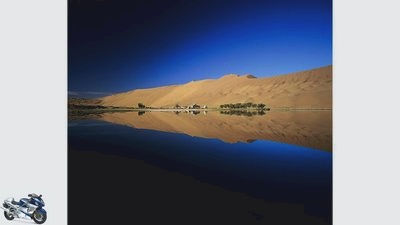
Martin
52/53
Part 2 and 3 of “Deserts of the earth” in MOTORRAD 24/2004 and 1/2005.
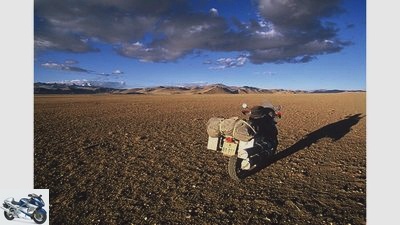
Martin
53/53
Part 2 and 3 of “Deserts of the earth” in MOTORRAD 24/2004 and 1/2005.
to travel
Out and about: Michael Martin Special
MOTORCYCLE Out and about: Michael Martin Special
Targeting the deserts of the planet
Deserts are his destiny. Even after more than 100 expeditions, they inspire Michael Martin again and again, and the BMW GS brought him close to people and nature. The well-known travel photographer reports exclusively for MOTORRAD what has been on his mind for 30 years.
Michael Martin
08/10/2009
For 30 years I have been traveling the deserts of the earth with my camera, and for 18 years on a motorcycle. The motorcycle that transports my water and food supplies as well as my cameras and films becomes a rolling oasis for me in the deserts. In 1981, when I was 17, I went to Morocco for the first time. In the summer holidays, with the moped. The journey in the decrepit Hercules vehicle alone takes five weeks, but it’s enough for a first contact with the desert and it changes my life forever. I then drive more than twenty times in old cars, mainly Peugeot 504, through the Sahara to West Africa and get to know the world’s largest desert right down to its most remote corners. At the beginning of the 1990s, the security situation in Algeria, Niger and Mali deteriorated rapidly, and I had to look around for new destinations in eastern and southern Africa. I realize that at the time I was much closer to the country and its people with the moped than with the car, and so I courageously ask BMW motorcycle whether they will provide me with three machines for a motorcycle tour from Kenya to Cape Town. Surprisingly, I got a chance and in the summer of 1991 I started with my friends Gregor and Kay on three R 100 GS from Kenya to Cape Town.
From Lake Turkana in northern Kenya we follow the Rift Valley south, watch hippos at Lake Baringo, flamingos at Lake Nakuru and marvel at the hot water fountains at Lake Bogoria. In Tanzania we fight our way to the remote volcano Oldoniyo Lengai on a difficult slope. This is where our lack of motorcycle experience is particularly noticeable. The heavily loaded motorcycles throw us off every minute. We reach the volcano completely exhausted. The ascent turns into a disaster, because an emergency bivouac just below the crater rim leads to severe kidney inflammation in me, and the batteries of my cameras collapse at the summit. I have to come back later to take the photos I need. After visiting the Ngorongoro Crater, which is closed to motorbikes because of its abundance of game, we follow the Transafrican Highway through Tanzania and Zambia to Botswana. The sand slopes of the Kalahari overwhelm us. Only in the Okavango Delta can we find a few days of rest. Then we continue straight to the Cape of Good Hope in South Africa.
I will name the lecture resulting from this trip “Trans africa”, and MOTORRAD prints my first big color series. From now on I want to stay with the motorcycle because I not only have a lot of fun, but it is also easier to come into contact with the people in the countries I travel to. In 1994 I started my next project: I want to accompany the Nile from its mouth in Egypt to its sources in Ethiopia and Central Africa by motorcycle. Also because the longest river on earth flows through a wide variety of landscapes and cultures. My friends Holger and Wojo are going with me. BMW is once again providing us with motorcycles: a BMW R 1100 GS equipped with the new boxer engine and an R 100 GS. I have the latter converted into a team by the Allgau team builder Karl Schmid. The front fork welded by him would survive several demise of the world, the V2 A steel used for the sidecar boat makes an extremely solid impression. Lufthansa transports both machines to Cairo. It takes eight days for me to get them from Egyptian customs. The journey will continue to be determined by border problems. After the forced stay in Cairo, we follow the Nile to Aswan, before the closed Egypt-Sudan border forces us to make a long detour across the Red Sea.
We have to drive through Sudan in a hurry because the border to Eritrea threatens to be closed, the border to Ethiopia is already closed. Despite all the obstacles, we advance to the sources of the Blue Nile in Ethiopia and continue via Kenya to Uganda and Rwanda, where two source rivers of the White Nile arise. Here we once again get to know African talent for improvisation: Shortly before reaching the Ruwenzori, I suddenly hear a loud grinding noise on the rear wheel. I stop, examine the studded tire. The entire wheel hangs crooked and can be moved back and forth. The cause is quickly found: The bolt that centers the cardan shaft in the cardan housing is missing. Obviously it has loosened, fell out and is now somewhere along the route behind me in the bush. I run back a kilometer, feeling depressed, but can’t find anything. We have to stop a truck to take the motorcycle to the nearest airport. The first truck already stops.
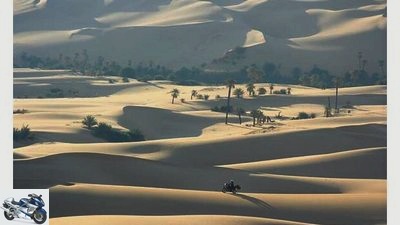
Martin
The best feeling: to glide along on a wide desert expanse.
The driver looks at the damage, takes a machete out of the driver’s cab without comment, silently falls a tree and carves a bolt with practiced handles. With a stone he drives the bolt into the thread of the cardan housing. It works! The mechanics at the BMW branch in Munich were amazed when they inspected the handmade spare part weeks later. In 1996 the political situation in Niger and Mali began to calm down. I can finally leave to see the Sahara again and to get to know other African deserts. I call the project “The deserts of Africa”. Starting from Cape Town, my girlfriend at the time Katja and I want to cross all of Africa’s deserts by motorcycle. BMW presents a new R 1100 GS, for the first time Touratech is further equipping the machine, installing a ceramic clutch, a large tank and a sturdy case system.
We let the motorcycle fly to Cape Town and drive to the Namib. The well-developed network of slopes and petrol stations poses no problems for us, only the slopes of the Kaokoveld require driving skills and logistical effort. The Kalahari is now also criss-crossed by tar roads, so that we will soon reach the deserts of the Rift Valley in East Africa. Crossing the Danakil Desert takes a lot of strength due to a persistent sandstorm and the danger of landmines. From the Eritrean port of Massawa we cross the Red Sea to Suez in Egypt. The east-west crossing of the Sahara lies ahead of us.
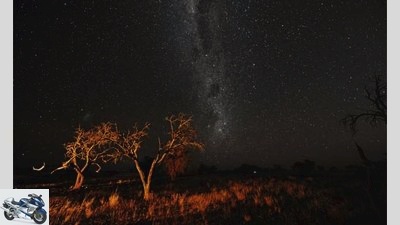
Martin
My passion for travel arose from my enthusiasm for astronomy, says Martin.
The route takes us to Libya to the Mandara lakes in Erg Ubari, then to the volcanic crater Wau en Namus. Accompanied by a guide who is knowledgeable about mines, we leave Libya on a closed road towards Chad, where there are again the threat of mines. We use the short peace phase in the Tibesti Mountains to visit the Bardai oasis and the Trou Natron, a collapsed volcanic crater. We cross the Tenere, see the last salt caravans there and reach the Air Mountains, which are inhabited by Tuareg nomads. Driving along the Niger, we reach Timbuktu. From there it goes on the bandit-endangered route to Mauritania, where Katja and I reach the Atlantic after six months. The lecture and photo book will be a great international success and the basis for an even bigger project: Now I want to cross all of the world’s deserts! It should start in January 2000. Shortly before, I met Elke, who not only wants to accompany me but also want to make a film. Two of us will ride a motorcycle in order to be as flexible as possible and to save costs.
BMW lends us an 1150 GS, Touratech donated the tried and tested ceramic clutch, the large tank and the case system. The first of the four big stages takes us into the deserts of Arabia and Asia. We travel by ship from Venice to Turkey and leave the winter behind us in Syria and Jordan. Because a visa for Saudi Arabia could not be obtained, we avoid the Red Sea to get to Yemen, which impresses us with its rough landscape and traditional architecture. Via the Wadi Hadramaut we come to Oman and further to the United Arab Emirates. In Iran we plow through the Lut desert, visit mountain nomads and drive over the salt flats of the Kavir. The highlight in Central Asia is a fire crater in the heart of the Karakum, where natural gas has been burning for decades. The next destination is Mongolia, whose southern part of the country is dominated by the Gobi desert. Next to many yurts there are daring-looking Ural horse-drawn teams. It is the only country in the world where teams are used as taxis. Thanks to months of preparation, we manage to enter China with a motorcycle. We visit several deserts there, including the Badain Jaran Desert in Inner Mongolia.
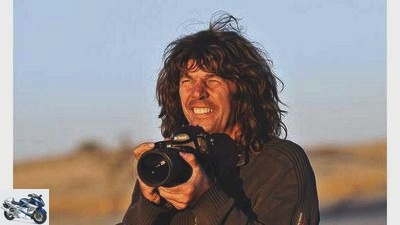
Martin
Michael Martin on a photo tour.
In the middle of mega dunes there are deep blue freshwater lakes, in one of which the Lamaistic monastery Badan Jilin is reflected. We follow the Silk Road south of the Takla Makan Desert and on September 11, 2001 of all places, we leave China for Pakistan. Because we fear the consequences of the terrorist attacks in New York, we cross all of Pakistan on a dangerous night drive and reach India just before the borders are closed. The destination is the Thar desert, where we experience the largest camel market in the world and the highlight of the pilgrimage season in Pushkar. A detour to Ladakh awakens our interest in Tibet. We interrupt the trip in India and organize the entry into Tibet from Europe. In April 2002 we can actually enter. We reach our destination, the holy mountain Kailash, in seven daily stages. Back in Kathmandu, we have the motorcycle transported to Australia by air freight. There we drive to the northwest, where the Great Sandy Desert reaches the Indian Ocean. From Eighty Mail Beach we first follow the lonely Kidson Track 600 kilometers, then the Gary Highway, a lane that is barely discernible in the desert grass with a vehicle frequency of less than one car per week. Elke and I enjoy the untouched nature and the evenings by the fire. After a short stay in Alice Springs, we tackle the Simpson Desert. It is characterized by a good 1000 dunes that run across our direction of travel. The Great Victoria Desert begins west of Cooper Pedy, which forces us to take 60 liters of fuel with us due to the enormous distances involved. To the south joins the limestone plain of the Nullarbor Plain, which is one of the most monotonous stretches of our journey through the deserts of the earth. After three months in Australia, we arrive in Sydney and ship the motorcycle to South America. On the Panamericana we reach the Atacama, which extends northwards parallel to the Pacific coast.
For days we drive in dense coastal fog, which is typical for the winter months. Then America’s dream road climbs, and we break through the blanket of fog, a steel-blue sky shines above us for the next few weeks. From San Pedro de Atacama we drive up to the Bolivian Altiplano, a high desert that can be found between the Andean cordillas at an altitude of 4000 meters. The thin air and the nightly cold demand a lot from Elke and me. During one night on the salt flat of the Salar de Uyni, the thermometer fell to minus 25 degrees. Further north we have fourteen river crossings to create. At first I drive too fast into the icy rivers. The bow wave collapses over the tank, and water enters the engine through the air filter. An urgently needed oil change is out of the question, because we neither have enough oil nor a filter.
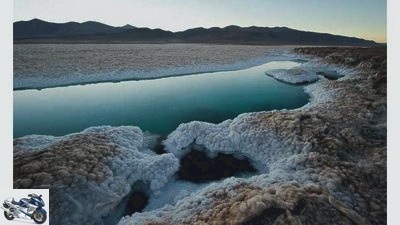
Martin
Martin discovers the waterhole at the Salar de Arizaro, a salt lake on the Argentine Altiplano.
But the good engine starts again and again after a short drying time. In the Peruvian capital Lima we find an airline that transports the motorcycle from South America to North America. Our first destination in the USA is the Sonoran Desert in Arizona and Mexico, which is famous for its abundance of cacti. The next highlight is Death Valley. Away from the hustle and bustle of tourists, we come across a clay pan on which stones slide as if by magic and leave long traces. The most beautiful landscapes in America can be found on the Colorado Plateau, the biker’s paradise par excellence. From White Sands it goes in marathon stages across the American Midwest to New York City. From here we have the machine transported to Windhoek in Namibia. We don’t stay long in the Namib and Kalahari, because the crossing of the Sahara should be the final highlight. At nine million square kilometers, it is by far the largest desert on earth. In the case of a sandstorm, we follow the 1300 kilometer long “Route de l’Espoir” to Nema, cross the border to Mali and drive to Timbuktu, a legendary destination on the southern edge of the Sahara from time immemorial. In Agadez, in the north-east of Niger, it first goes to the eastern edge of the Air Mountains, then on to Algeria. At Tassili du Hoggar we experience the most beautiful landscapes that I have ever seen in a desert. The further route takes us via Djanet back to Niger and on to Chad. We avoid the Tibesti Mountains and reach the lakes of Ouianga Kebir, the largest lakes in the Sahara, via the Bahr el Gazal. With smuggled Libyan gasoline in the tank, we roll towards the Ennedi Mountains, whose rock labyrinth presents us with some orientation problems. Now the last stage to the Nile lies ahead of us. We cross the border to Sudan without controls and follow Wadi Howar towards the Nile. Because the air pressure in the front tire is too low, a crack forms that gets bigger and bigger. Helpful smugglers sew the tire, it holds out. We reach the Nile at Dongola, where we take care of the Sudanese entry formalities. We quickly reach the Mediterranean and find a ship to Europe in the port of Alexandria. A few days later we drive towards Munich in the snowstorm and are stopped by the police at the city limits. A sewn tire and a long-expired TuV obviously keep the two officers busy until they let us drive the last ten of the more than 100,000 kilometers home. There is not much time left before my book is published worldwide “The deserts of the earth” in seven languages and until the premiere of my slideshow of the same name.
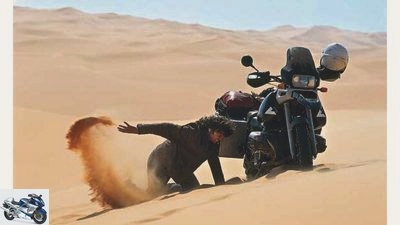
Martin
The desert is eternal, my motorcycle track will soon be gone, says Martin.
MOTORRAD reports on our trip in three episodes. After showing my slide show hundreds of times in German-speaking countries between 2004 and 2008, I finally want to go again. On two trips to Mali and South America at the beginning of 2009, I am familiarizing myself with digital photography, before I embark on the first stage of my new project in August 2009 “Planet desert” break up. After all these adventures, my enthusiasm for the deserts of our planet only grew. I’ve experienced unbelievable things, got to know wonderful people, enjoyed dreamy landscapes and gratefully register the insights that my travels have brought me every day. That’s why, after the dry deserts, I definitely want to explore the ice and volcanic deserts of the earth by motorcycle and compare them with the dry deserts. My new project starts in Iceland.
Related articles
-
Michael Martin’s Motorcycle Adventure, Part 7: Winter on the Dempster Highway
Michael Martin to travel Michael Martin’s Motorcycle Adventure, Part 7: Winter on the Dempster Highway Michael Martin’s Motorcycle Adventure, Part 7:…
-
Michael Martin’s Motorcycle Adventure, Part 4: Australia
Michael Martin to travel Michael Martin’s Motorcycle Adventure, Part 4: Australia Michael Martin’s motorcycle adventure Slope dreams in Australia…
-
Annette Johann to travel Alpine special Alpine special Three weeks at the top Either over 1800 meters high or under three meters wide ?? nothing in…
-
Buy used – rare motorcycles and special models
Breakable 24 pictures Breakable 1/24 Alejandro Garcia, Neuss, Yamaha R6 Rossi Edition, EZ 6/2005, 14,100 km, 5,290 euros: the classy 600 is very well…
-
3 cylinder special – three cylinders from the 70s and 80s
fact 17th pictures archive 1/17 Kawasaki 750 H2. archive 2/17 Most drivers who wanted to take on the 750-H2 looked into the tube, or rather into these…
-
Martin to travel Deserts of the earth Deserts of the earth Motorcycling at the limit Photographer Michael Martin took five years to realize his new…
-
BMW F 900 R Force: special model for France
BMW motorcycle 10 pictures BMW motorcycle 1/10 BMW France builds 300 copies of the F 900 R as a special edition “Force” around. BMW motorcycle 2/10 The…
-
Special: Alpen Masters 2011 – all bikes, information and videos
Gargolov motorcycles Special: Alpen Masters 2011 – all bikes, information and videos Special: Alpine Masters 2011 Summit meeting: all bikes, information…
-
Special issue MOTORRAD COACH 2017
Sports & scene Special issue MOTORRAD COACH 2017 MOTORCYCLE COACH 2017 Drive safer, more confidently and better The MOTORRAD COACH 2017 is available from…
-
MOTORCYCLE, BMW Sports & scene MOTORCYCLE BMW Special 1/2018 MOTORCYCLE BMW Special 1/2018 White and blue special issue The MOTORRAD BMW Spezial 1/2018…